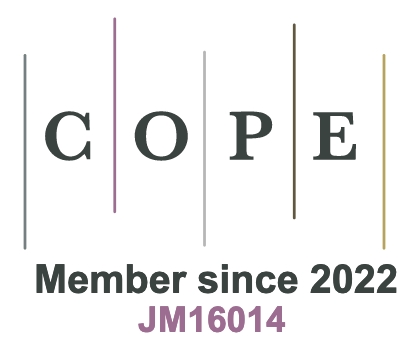REFERENCES
1. Pohlmann S. Metrics and methods for moving from research to innovation in energy storage. Nat Commun 2022;13:1538.
2. Pandya DJ, Muthu Pandian P, Kumar I, et al. Supercapacitors: review of materials and fabrication methods. Mater Today Proc 2023;In Press.
3. Liu X, Lyu D, Merlet C, et al. Structural disorder determines capacitance in nanoporous carbons. Science 2024;384:321-5.
4. Li J, Xia Z, Wang X, et al. Distinguished roles of nitrogen-doped Sp2 and Sp3 hybridized carbon on extraordinary supercapacitance in acidic aqueous electrolyte. Adv Mater 2024;36:e2310422.
5. Yang M, Zhou Z. Recent breakthroughs in supercapacitors boosted by nitrogen-rich porous carbon materials. Adv Sci 2017;4:1600408.
6. Yang J, Su F, Liu T, Zheng X. Heteroatoms co-doped multi-level porous carbon as electrode material for supercapacitors with ultra-long cycle life and high energy density. Diam Relat Mater 2024;141:110693.
7. Zhang Y, Wang Y, Feng Y, Liu W, Chen F. Amorphous nickel–cobalt phosphate nanosheets optimized by a micron−sized copper particle array with ultrahigh specific capacitance for asymmetric supercapacitors. J Alloys Compd 2024;990:174393.
8. Patil S, Bhosale A, Kundale S, Dongale T, Vanalakar S. Enhancing capacitance performance of functional group assisted carbon quantum dots derived from turmeric plant waste. Carbon Trends 2024;15:100370.
9. Hajibaba S, Gholipour S, Pourjafarabadi M, et al. Electrochemical sulfur-doping as an efficient method for capacitance enhancement in carbon-based supercapacitors. J Energy Storage 2024;79:110044.
10. Wood KN, O’Hayre R, Pylypenko S. Recent progress on nitrogen/carbon structures designed for use in energy and sustainability applications. Energy Environ Sci 2014;7:1212-49.
11. Dong K, Wang J, Guo F, et al. Facile synthesis of O and P co-doped hierarchical porous carbon nanosheets from biomass for high-performance supercapacitors. Diam Relat Mater 2023;140:110531.
12. Zheng Y, Chen K, Jiang K, Zhang F, Zhu G, Xu H. Progress of synthetic strategies and properties of heteroatoms-doped (N, P, S, O) carbon materials for supercapacitors. J Energy Storage 2022;56:105995.
13. Lu Y, Liang J, Deng S, et al. Hypercrosslinked polymers enabled micropore-dominant N, S Co-doped porous carbon for ultrafast electron/ion transport supercapacitors. Nano Energy 2019;65:103993.
14. Zhou M, Vassallo A, Wu J. Data-driven approach to understanding the in-operando performance of heteroatom-doped carbon electrodes. ACS Appl Energy Mater 2020;3:5993-6000.
15. Jha S, Yen M, Salinas YS, Palmer E, Villafuerte J, Liang H. Machine learning-assisted materials development and device management in batteries and supercapacitors: performance comparison and challenges. J Mater Chem A 2023;11:3904-36.
16. Thakkar P, Khatri S, Dobariya D, Patel D, Dey B, Singh AK. Advances in materials and machine learning techniques for energy storage devices: a comprehensive review. J Energy Storage 2024;81:110452.
17. Rahimi M, Abbaspour-Fard MH, Rohani A. A multi-data-driven procedure towards a comprehensive understanding of the activated carbon electrodes performance (using for supercapacitor) employing ANN technique. Renew Energ 2021;180:980-92.
18. Jha S, Bandyopadhyay S, Mehta S, et al. Data-driven predictive electrochemical behavior of lignin-based supercapacitors via machine learning. Energy Fuels 2022;36:1052-62.
19. Pan R, Gu M, Wu J. Data-driven optimization of carbon electrodes for aqueous supercapacitors. J Chem Eng Data 2024.
20. Su H, Lin S, Deng S, Lian C, Shang Y, Liu H. Predicting the capacitance of carbon-based electric double layer capacitors by machine learning. Nanoscale Adv 2019;1:2162-6.
21. Adekoya GJ, Adekoya OC, Ugo UK, Sadiku ER, Hamam Y, Ray SS. A mini-review of artificial intelligence techniques for predicting the performance of supercapacitors. Mater Today Proc 2022;62:S184-8.
22. Yang H, Fang L, Yuan Z, et al. Machine learning guided 3D printing of carbon microlattices with customized performance for supercapacitive energy storage. Carbon 2023;201:408-14.
23. Pan K, Liu Q, Zhu L, et al. Integrated data mining for prediction of specific capacitance of porous carbon materials for flexible energy storage devices. J Energy Storage 2023;73:109072.
24. Liu P, Wen Y, Huang L, et al. An emerging machine learning strategy for the assisted-design of high-performance supercapacitor materials by mining the relationship between capacitance and structural features of porous carbon. J Electroanal Chem 2021;899:115684.
25. Saad AG, Emad-Eldeen A, Tawfik WZ, El-Deen AG. Data-driven machine learning approach for predicting the capacitance of graphene-based supercapacitor electrodes. J Energy Storage 2022;55:105411.
26. Rahimi M, Abbaspour-Fard MH, Rohani A. Synergetic effect of N/O functional groups and microstructures of activated carbon on supercapacitor performance by machine learning. J Power Sources 2022;521:230968.
27. Sun Y, Sun P, Jia J, et al. Machine learning in clarifying complex relationships: Biochar preparation procedures and capacitance characteristics. Chem Eng J 2024;485:149975.
28. Chenwittayakhachon A, Jitapunkul K, Nakpalad B, et al. Machine learning approach to understanding the ‘synergistic’ pseudocapacitive effects of heteroatom doped graphene. 2D Mater 2023;10:025003.
29. Yang X, Yuan C, He S, Jiang D, Cao B, Wang S. Machine learning prediction of specific capacitance in biomass derived carbon materials: effects of activation and biochar characteristics. Fuel 2023;331:125718.
30. Liu X, Ji D, Jin X, Quintano V, Joshi R. Machine learning assisted chemical characterization to investigate the temperature-dependent supercapacitance using Co-rGO electrodes. Carbon 2023;214:118342.
31. Kim M, Kang S, Gyu Park H, Park K, Min K. Maximizing the energy density and stability of Ni-rich layered cathode materials with multivalent dopants via machine learning. Chem Eng J 2023;452:139254.
32. Sawant V, Deshmukh R, Awati C. Machine learning techniques for prediction of capacitance and remaining useful life of supercapacitors: a comprehensive review. J Energy Chem 2023;77:438-51.
33. Lundberg SM, Lee SI. A unified approach to interpreting model predictions. In: 31st Conference on Neural Information Processing Systems (NIPS 2017); Long Beach, USA. 2017. Available from: https://proceedings.neurips.cc/paper_files/paper/2017/file/8a20a8621978632d76c43dfd28b67767-Paper.pdf. [Last accessed on 23 Oct 2024]
34. Zhang Y, Feng Y, Ren Z, et al. Tree-based machine learning model for visualizing complex relationships between biochar properties and anaerobic digestion. Bioresour Technol 2023;374:128746.
35. Kim H, Hong J, Park KY, Kim H, Kim SW, Kang K. Aqueous rechargeable Li and Na ion batteries. Chem Rev 2014;114:11788-827.
36. Tan J, Liu J. Electrolyte engineering toward high-voltage aqueous energy storage devices. Energy Environ Mater 2021;4:302-6.
37. Hwang JY, El-Kady MF, Li M, et al. Boosting the capacitance and voltage of aqueous supercapacitors via redox charge contribution from both electrode and electrolyte. Nano Today 2017;15:15-25.
38. Hu J, Zhao C, Si Y, et al. Chitosan-derived large surface area porous carbon via microphase separation engineering of pore-regulation and nitrogen-doping coupling for high-performance supercapacitors. Renew Energy 2024;228:120598.
39. Qiu C, Jiang L, Gao Y, Sheng L. Effects of oxygen-containing functional groups on carbon materials in supercapacitors: a review. Mater Design 2023;230:111952.
40. Tian K, Wang J, Cao L, et al. Single-site pyrrolic-nitrogen-doped sp2-hybridized carbon materials and their pseudocapacitance. Nat Commun 2020;11:3884.
41. Chen T, Luo L, Luo L, et al. High energy density supercapacitors with hierarchical nitrogen-doped porous carbon as active material obtained from bio-waste. Renew Energy 2021;175:760-9.
42. Wang T, Pan R, Martins ML, et al. Machine-learning-assisted material discovery of oxygen-rich highly porous carbon active materials for aqueous supercapacitors. Nat Commun 2023;14:4607.
43. Zhang S, Zhang Q, Ma R, et al. Boosting the capacitive performance by constructing O, N co-doped hierarchical porous structure in carbon for supercapacitor. J Energy Storage 2024;82:110569.
44. Barroso-Bogeat A, Alexandre-Franco M, Fernández-González C, Macías-García A, Gómez-Serrano V. Temperature dependence of the electrical conductivity of activated carbons prepared from vine shoots by physical and chemical activation methods. Micropor Mesopor Mat 2015;209:90-8.








